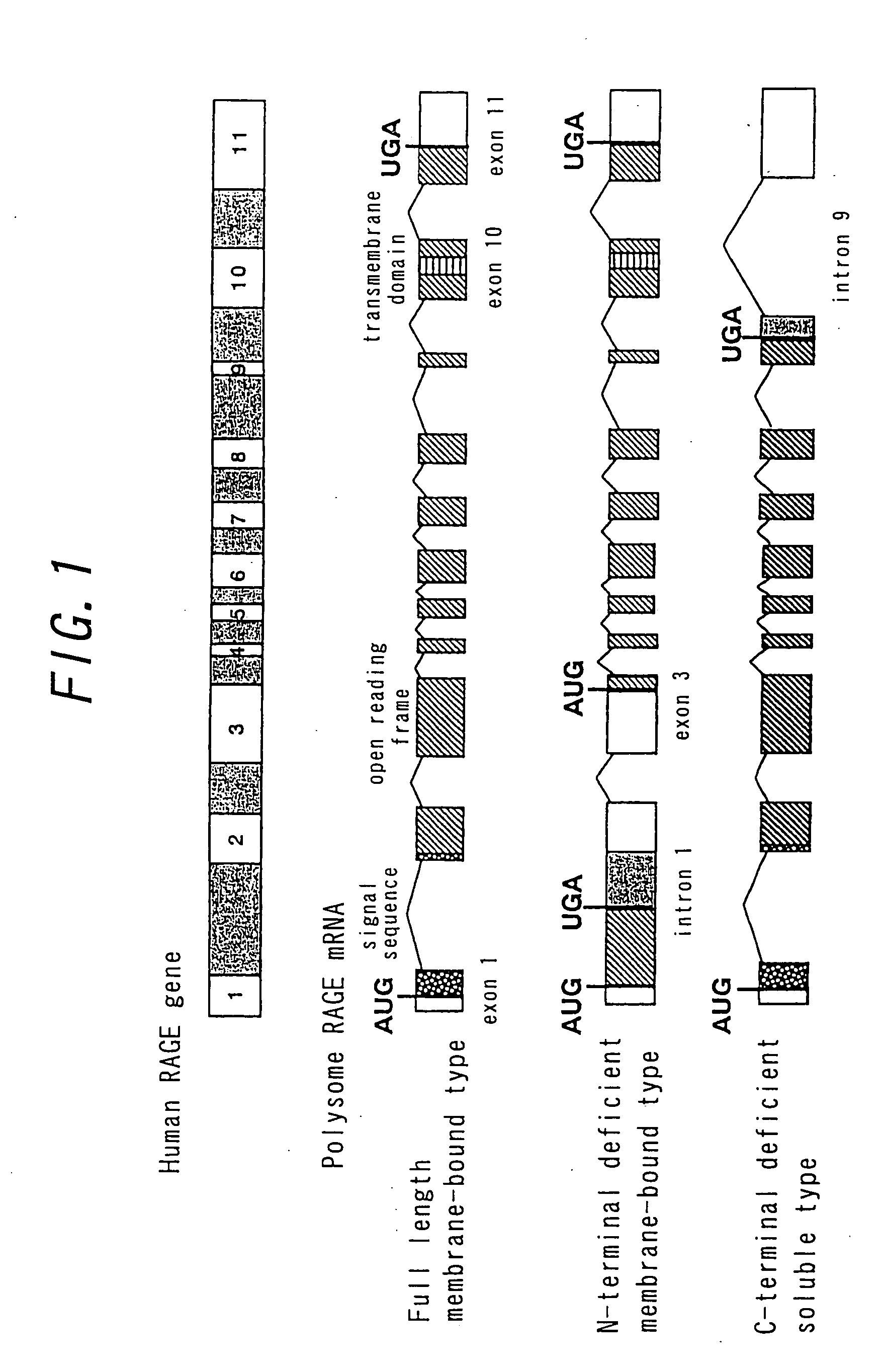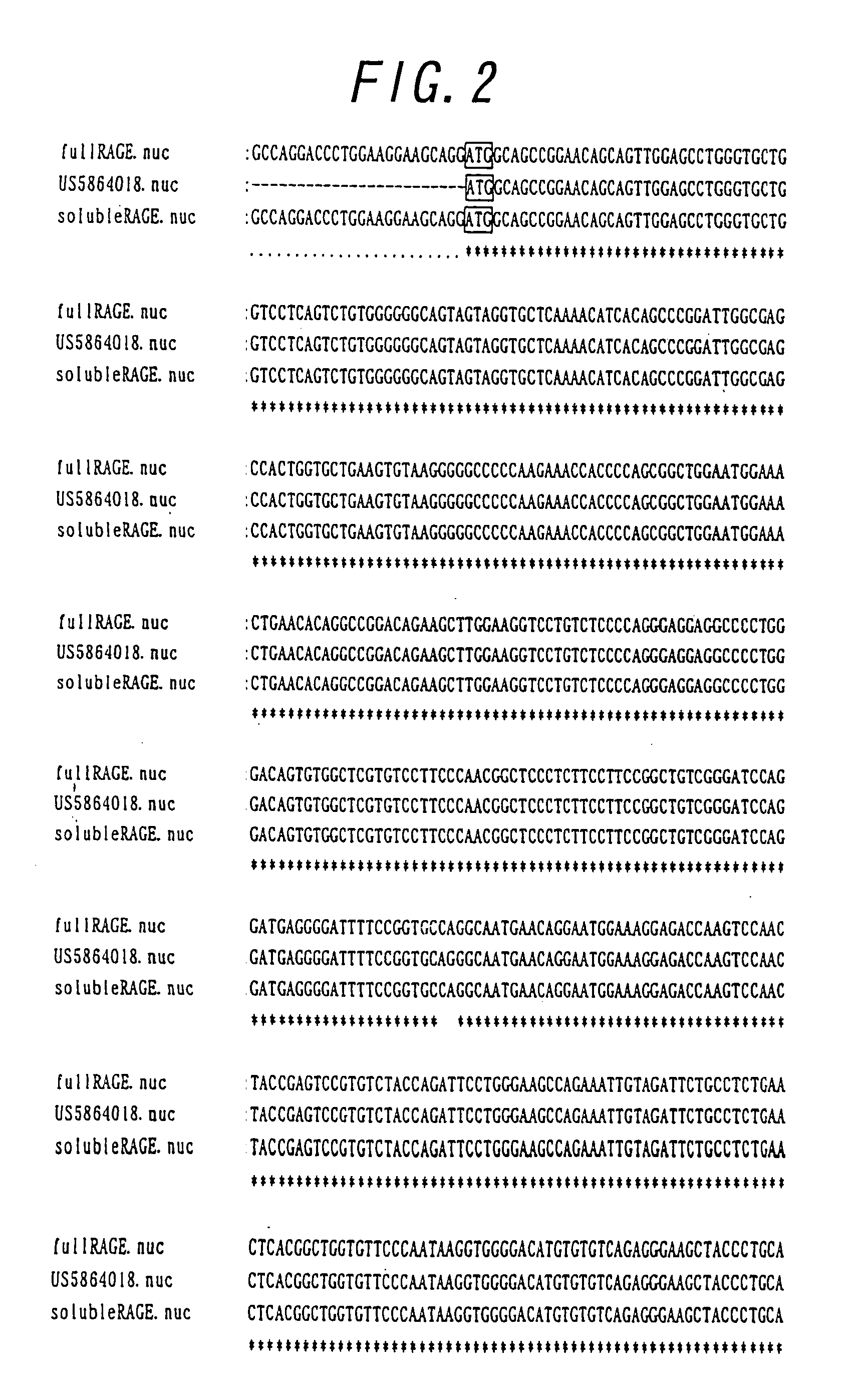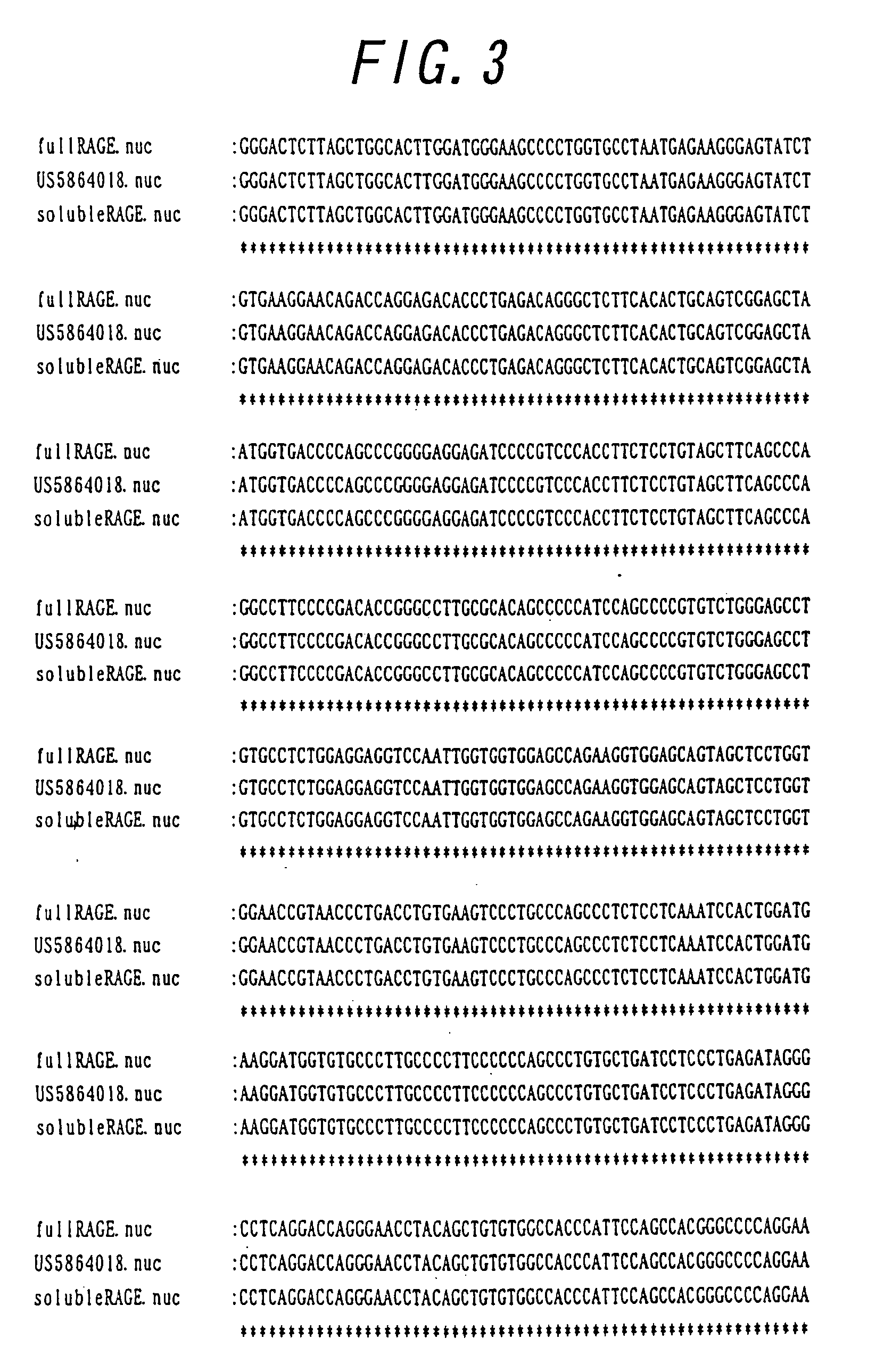Soluble rage protein
a technology of soluble rage and protein, which is applied in the field of human soluble rage, can solve the problems of not being completely free, not physiological, not performing the identification of such a factor,
- Summary
- Abstract
- Description
- Claims
- Application Information
AI Technical Summary
Benefits of technology
Problems solved by technology
Method used
Image
Examples
example 1
[0247] [Cell]
[0248] The primary cultures of microvascular endothelial cells from human skin were obtained from Cascade Biologics, Inc. (Portland, Oreg.). The cells having undergone 5-10 passages were used for purification of poly(A).sup.+RNA.
[0249] [Isolation of Polysome-Derived Poly(A).sup.+RNA]
[0250] The microvascular endothelial cells from human skin were grown in a flask for tissue culture, and washed with ice-cooled phosphate buffer / saline. Then, the cells were scrapped off with a cell scraper. The cell suspension was centrifuged, and the cells were collected as pellet. The cell pellet was suspended in 10 mM Tris-HCl buffer (pH7.6) containing 0.25M KCl, 10 mM MgCl.sub.2, 1 mM EDTA, 0.25M sucrose (RNase free), 0.1 mM DTT, 2 mM 4-(2-aminoethyl)-benzenesulfonylfluoride, and 1000 u / ml RNase inhibitor (Ambion, Inc., Austin, Tex.). The cells were then disrupted with a Dounce type homogenizer. The cell-lysate was centrifuged at 12,000.times.g for 15 minutes to remove nuclei and mitoch...
example 2
Preparation of Monoclonal Antibody
[0268] (a) Immunizing Source
[0269] As an antigen to be used for immunization, a synthetic polypeptide designed on the basis of the amino acid sequences, such as the recombinant soluble RAGE polypeptide and the sequence ID No. 2 of the sequence listing can be used. Moreover, the obtained cDNA is ligated to an expression vector for animal cell for expression in CHO cell, and thus obtained recombinant sRAGE can also be used as an antigen. The antigen protein may be purified by ion exchange chromatography, gel filtration, or other various chromatography.
[0270] It is possible to use the purified antigen for immunization by a conventional method to establish immunization, antibody-producing cells can be induced, then antibody-producing cells can be obtained as hybridomas by cell fusion. Further, hybridoma can be cloned based on the reactivity toward the purified antigen for immunization, and it can be established as a cell line of monoclonal antibody-prod...
example 3
Western Blotting
[0296] A 9 .mu.l of supernatant of the culture of COS7 cells expressing the human soluble RAGE polypeptide, 750 ng of the extract of COS cells expressing human recombinant matured full-length RAGE polypeptide (membrane-type RAGE polypeptide), and 150 ng of human lung extract protein were separated with 10% SDS-PAGE under reductive condition, and then transferred to a polyvinylidene difluoride (PVDF) membrane (MILLIPORE). Then, blocking of the membrane was performed with PBS containing 1% BSA, 5% skim milk and 0.1% Tween20 (blocking buffer) at room temperature for one hour, and then they were incubated at 25.degree. C. for one hour in the culture supernatant of the hybridoma cell lines 269-1D10, 269-4C9, 269-6B12 or 269-9C2, which expressed an antibody specific to anti-human soluble RAGE. The respective membrane was washed four times with PBS containing 0.1% Tween 20 (0.1% PBS-T). The bound antibodies were allowed to react at 25.degree. C. for one hour with HRP-bound ...
PUM
 Login to View More
Login to View More Abstract
Description
Claims
Application Information
 Login to View More
Login to View More - R&D
- Intellectual Property
- Life Sciences
- Materials
- Tech Scout
- Unparalleled Data Quality
- Higher Quality Content
- 60% Fewer Hallucinations
Browse by: Latest US Patents, China's latest patents, Technical Efficacy Thesaurus, Application Domain, Technology Topic, Popular Technical Reports.
© 2025 PatSnap. All rights reserved.Legal|Privacy policy|Modern Slavery Act Transparency Statement|Sitemap|About US| Contact US: help@patsnap.com



